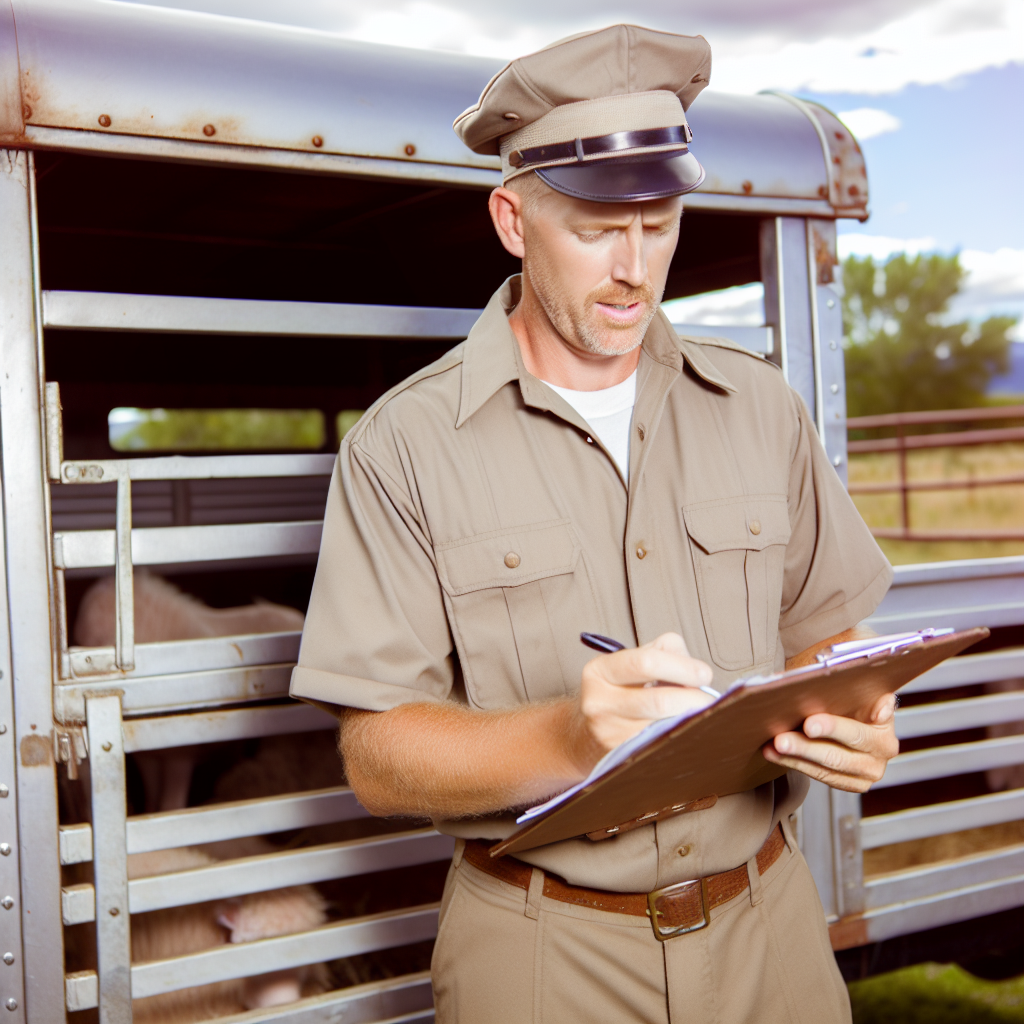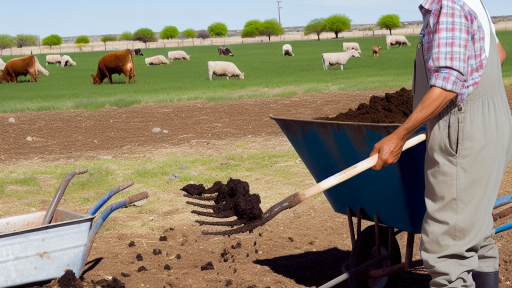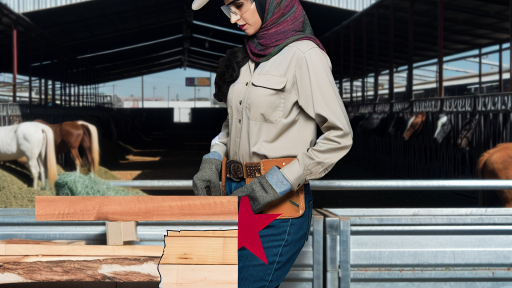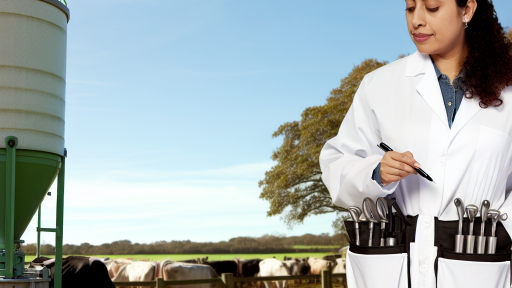Understanding the Regulations
Federal Guidelines for Livestock Transportation
The United States Department of Agriculture (USDA) oversees livestock transportation laws.
These laws aim to ensure humane treatment during transport.
They include specific requirements for animal care and handling.
Federal regulations enforce proper ventilation, space, and access to water.
Drivers must provide adequate rest during long trips.
Additionally, they should be aware of weather conditions.
State Regulations and Variations
State regulations may differ from federal guidelines.
Each state sets its own rules for livestock transportation.
These laws may impose stricter requirements on vehicle specifications.
Moreover, some states require special permits for transport.
It is vital to consult local regulations before transporting livestock.
Compliance and Record Keeping
Compliance with both federal and state laws is essential.
Keeping accurate records of transportation practices is necessary.
Document details such as driver information and transport dates.
Additionally, maintain records of health certificates for livestock.
Transform Your Agribusiness
Unlock your farm's potential with expert advice tailored to your needs. Get actionable steps that drive real results.
Get StartedThis documentation helps ensure smooth inspections and compliance checks.
Penalties for Non-Compliance
Non-compliance can result in severe penalties for livestock transporters.
Fines and sanctions may be imposed for violations.
Repeated offenses can lead to more significant consequences, including license suspension.
Ultimately, following regulations protects both animals and transporters.
Pre-Transportation Preparations
Health Assessments
Conducting health assessments is crucial before transporting livestock.
Regular veterinary checks ensure animals are fit for travel.
Assessments should evaluate overall health and fitness levels.
Check for signs of stress, illness, or injury during evaluations.
Additionally, monitor weight and nutritional status prior to transport.
Always keep detailed health records for reference.
Health assessment reports help ensure compliance with transport regulations.
Moreover, they aid in identifying animals that require extra care.
Vaccination Records
Maintaining accurate vaccination records is vital for livestock safety.
Vaccinations prevent the spread of diseases during transport.
Ensure all animals receive necessary vaccines as per guidelines.
Document vaccination dates and types clearly for each animal.
These records provide essential information for transporters and regulators.
If transporting across state lines, check regional vaccination requirements.
Proactive vaccination boosts herd immunity against common pathogens.
Overall, it protects both the livestock and the transport process.
Planning for Transportation
Effective planning can enhance the safety of livestock transport.
Choose the appropriate vehicle designed for safe transport.
Ensure the vehicle is well-maintained and clean prior to loading.
Showcase Your Farming Business
Publish your professional farming services profile on our blog for a one-time fee of $200 and reach a dedicated audience of farmers and agribusiness owners.
Publish Your ProfileFamiliarize yourself with the route to minimize travel time.
Consider weather conditions and times of day for travel.
Plan for rest stops to allow for necessary breaks during transport.
Ultimately, thorough planning reduces stress for both animals and handlers.
Choosing the Right Vehicle
Transport Equipment Types
Selecting the right vehicle is essential for transporting livestock safely.
Different types of transport equipment cater to various livestock needs.
For instance, trailers are commonly used for larger animals.
Conversely, smaller vehicles may work better for poultry or rabbits.
Ensure your vehicle is spacious enough for the livestock’s comfort.
Safety Features to Consider
Safety features play a crucial role in livestock transportation.
Look for vehicles with secure compartments to prevent escape.
Equipped ventilation systems help maintain fresh air circulation.
Also, check for non-slip flooring to prevent injuries.
Reliable locking mechanisms ensure that doors remain closed during transit.
Vehicle Condition and Maintenance
Regular vehicle maintenance is vital for safe transportation.
Inspect tires for wear and tear before each trip.
Ensure brakes are functioning properly to avoid accidents.
Cleansing the vehicle after use reduces disease transmission risks.
Maintaining a clean environment keeps livestock healthy and stress-free.
Legal Requirements and Compliance
Familiarize yourself with local regulations concerning livestock transport.
Each region has specific legal requirements for transport vehicles.
Compliance ensures the safety of both animals and drivers.
Always secure necessary permits before setting out on a journey.
Failure to comply can result in fines or legal issues.
Find Out More: Managing Beef Cattle Lifecycle from Birth to Market
Loading and Unloading Procedures
Importance of Calm Environments
Creating a calm environment is essential during loading and unloading.
A quiet area reduces stress for livestock significantly.
Minimize loud noises and sudden movements during the process.
Use gentle handling techniques to soothe the animals.
Preparation Before Loading
Preparing the loading area enhances efficiency and safety.
Ensure the trailer is clean and properly equipped.
Familiarize animals with the loading area beforehand.
Having food and water available can ease anxiety.
Proper Techniques for Loading
Use proper techniques for loading livestock effectively.
Always load animals in groups to minimize stress.
Introduce animals to the loading ramp slowly.
Keep the ramp at a low incline to ease movement.
Monitoring during Transport
Regularly monitor the livestock during transport.
Check for signs of distress or discomfort frequently.
Maintain a comfortable environment inside the trailer.
Showcase Your Farming Business
Publish your professional farming services profile on our blog for a one-time fee of $200 and reach a dedicated audience of farmers and agribusiness owners.
Publish Your ProfileAdjust ventilation and temperature based on conditions.
Safe Unloading Practices
Unloading should proceed as calmly as loading.
Wait for the animals to settle before unloading.
Encourage them to exit the trailer steadily.
Use barriers or gates to guide animals safely.
Post-Transport Care
After unloading, check livestock for any injuries.
Provide water and food immediately after transport.
Allow them to rest in a quiet, familiar environment.
Evaluate their condition and address any issues promptly.
You Might Also Like: Effective Strategies for Large-Scale Livestock Transport
Monitoring Livestock During Transit
Importance of Monitoring
Monitoring livestock during transit is crucial for their welfare.
It ensures their health and safety during transport.
Effective monitoring can prevent stress and injuries.
Moreover, it helps in quick response to any emergencies.
Techniques for Effective Monitoring
Utilizing visual checks maintains livestock wellbeing.
Regular stops allow for assessments and adjustments.
Having a monitoring checklist can standardize procedures.
Using temperature monitoring devices helps manage climate control.
Technology Solutions
Implementing GPS tracking enhances overall transport efficiency.
This technology allows real-time location updates.
Moreover, it assists in planning optimal routes.
Using health monitoring sensors ensures early detection of issues.
Training and Protocols
Providing training for staff is essential for effective monitoring.
Education focuses on recognizing health indicators in livestock.
Additionally, establishing clear protocols reduces confusion.
This ensures consistent monitoring practices for all employees.
Collaboration with Professionals
Partnering with veterinarians enhances livestock care during transit.
Regular consultations can provide valuable insights on best practices.
Furthermore, experts can help in developing specific monitoring strategies.
This collaboration ensures compliance with industry standards.
Learn More: Maintaining Cleanliness In Livestock Housing

Environmental Considerations: Temperature Control and Ventilation in Transport
Importance of Temperature Control
Proper temperature control is essential during livestock transportation.
It prevents stress and health issues for the animals.
Extreme temperatures can be detrimental to their well-being.
Transport operators must monitor environmental conditions regularly.
Strategies for Effective Temperature Control
Utilize insulated trailers to maintain consistent temperatures.
Install thermometers inside transport vehicles to track climate levels.
Employ temperature-controlled systems when transporting during extremes.
Regular checks should be part of every journey.
Understanding Ventilation Needs
Ventilation ensures a steady supply of fresh air inside the transport vehicle.
Showcase Your Farming Business
Publish your professional farming services profile on our blog for a one-time fee of $200 and reach a dedicated audience of farmers and agribusiness owners.
Publish Your ProfilePoor ventilation can lead to heat stress and suffocation.
Different species have unique ventilation needs based on size and type.
Implementing Effective Ventilation Solutions
Design vehicles with plenty of airflow paths for the animals.
Use adjustable ventilation openings to adapt to varying conditions.
Monitor ventilation closely during long trips.
Regular maintenance of ventilation systems is crucial for effectiveness.
Delve into the Subject: Sustainable Practices in Livestock Handling and Transport
Emergency Protocols: Preparing for Unforeseen Situations During Transport
Importance of Emergency Preparedness
Emergency preparedness is essential in livestock transportation.
It minimizes stress for both animals and handlers.
Moreover, it helps protect your investment in livestock.
Developing an Emergency Plan
Create a comprehensive emergency plan before transportation.
Include steps for various scenarios, such as vehicle breakdowns.
Train staff on the plan to ensure everyone is informed.
Regularly review and update the plan as needed.
Essential Equipment to Keep on Hand
Equip your transport vehicle with necessary emergency supplies.
Consider including the following items:
- First-aid kits for both animals and humans.
- Fire extinguishers to address any fire hazards.
- Extra water and feed for animals during emergencies.
- Basic tools for minor repairs and adjustments.
- A communication device to reach help if needed.
Training Your Team
Regular training sessions enhance safety during transport.
Focus on handling emergencies effectively.
Include simulations of potential incidents for practical experience.
Encourage open discussions about safety concerns and suggestions.
Establishing Communication Channels
Effective communication is vital in emergencies.
Establish clear communication protocols among team members.
Utilize phones or two-way radios for immediate contact.
Ensure that all team members know who to contact for support.
Assessing Risks Before Departure
Conduct a risk assessment before each transport trip.
Consider route conditions, weather, and vehicle status.
Identifying potential issues helps avoid emergencies in advance.
Make adjustments to your plan as needed based on the assessment.
Post-Transportation Care: Ensuring Animal Wellbeing After Arrival
Immediate Assessment
After transportation, conduct an immediate health assessment of the animals.
Check for signs of stress or injury upon arrival.
Separate any injured or sick animals from the rest.
Provide appropriate care for those in need.
Environmental Adjustments
Adjust the living environment to reduce stress.
Ensure proper ventilation and suitable temperatures.
Provide clean, dry bedding to make the animals comfortable.
Also, ensure easy access to fresh water and feed.
Nutrition and Hydration
Offer nutritional support tailored to the animals’ needs.
Transition their diet gradually to avoid digestive issues.
Ensure there is always access to fresh water.
Hydration is crucial for their recovery and wellbeing.
Showcase Your Farming Business
Publish your professional farming services profile on our blog for a one-time fee of $200 and reach a dedicated audience of farmers and agribusiness owners.
Publish Your ProfileMonitoring and Observation
Continue to monitor the animals for signs of stress or illness.
Observe their eating and drinking habits closely.
Regular checks help identify any issues early on.
Keep a detailed log of each animal’s health status.
Integration into the Herd
Introduce the transported animals to existing groups gradually.
Observe interactions to prevent aggression or bullying.
Use visual barriers if necessary to ease the transition.
Monitor closely during initial interactions for safety.
Veterinary Care
Schedule a veterinary check-up shortly after arrival.
Address any health concerns or vaccinations needed.
Consult the veterinarian about the animals’ nutritional needs as well.
Timely intervention helps maintain overall health.
Long-Term Recovery
Provide a stable environment for ongoing recovery.
Allow time for animals to adjust to their new surroundings.
Gradually introduce them to routine activities and behaviors.
Keep records to ensure their health is consistently improving.
Additional Resources
Animal Transportation | National Agricultural Library
USDA Actions to Protect Livestock Health From Highly Pathogenic …




